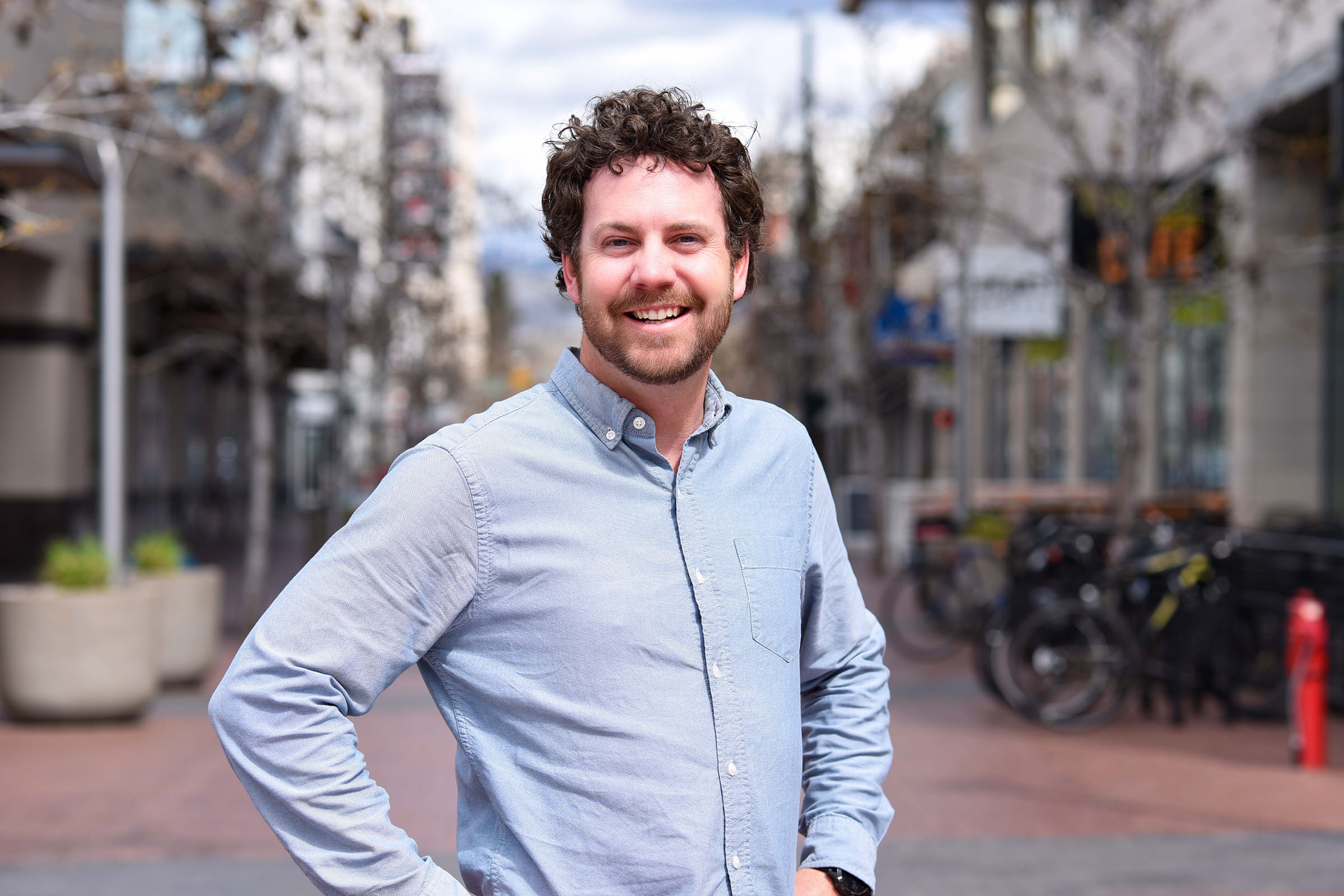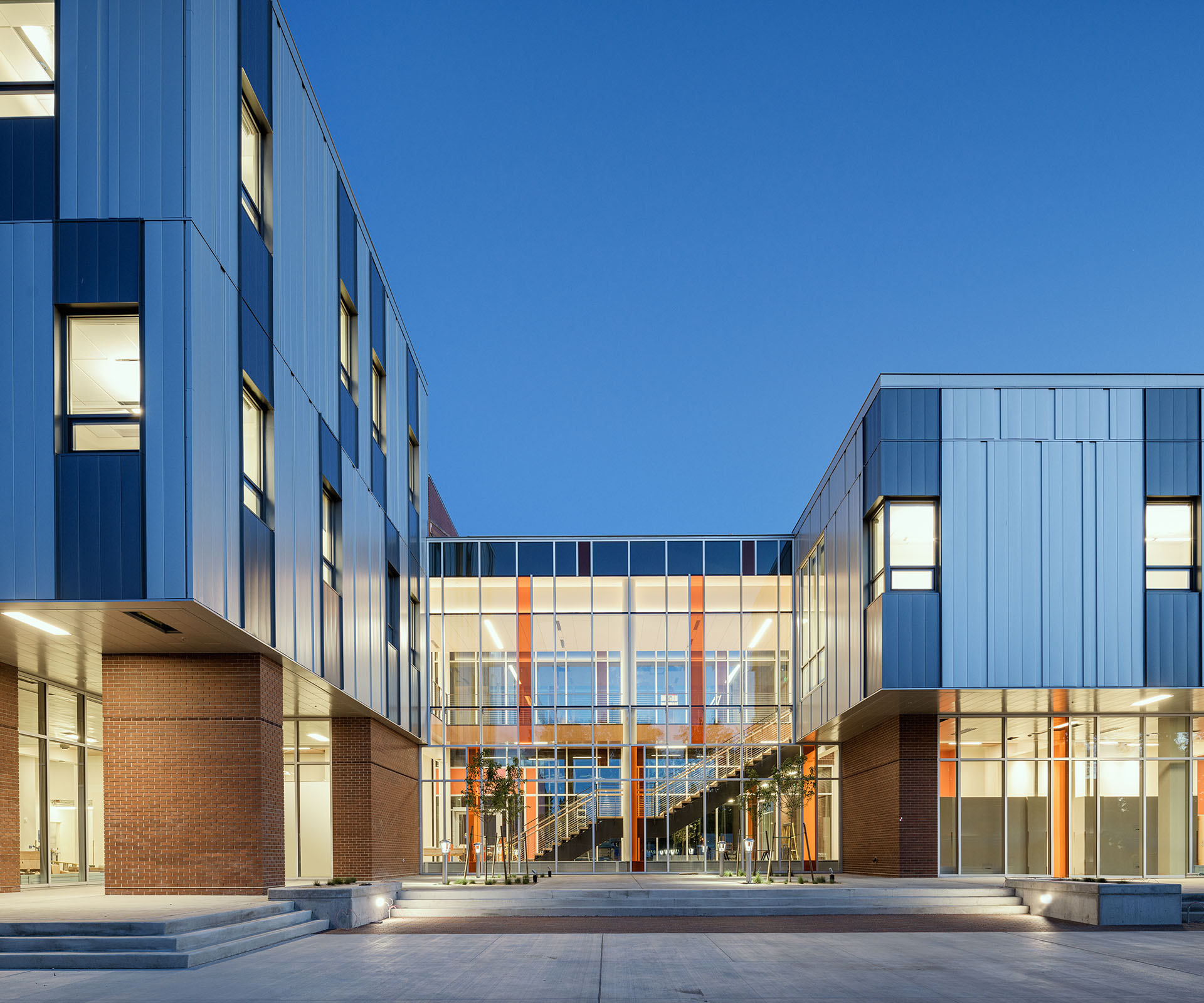
Joel Parks PhD, PE
AssociateBoise State University Micron Center for Materials Research
How do you take a nationally recognized material science department and turn it into a world class research institute?
This is the question that Boise State University found itself trying to answer. The solution they came up with took a line right out of the movie, Field of Dreams:
“Build it and they will come.”
Boise State University set out to build a world-class research and educational facility for its Material Science Department that would attract the best and brightest researchers and students in the field.

How?
To attract top talent, there were 2 main goals for the new building:
- Create a world-class lab facility capable of supporting high-end research and hosting some of the most precise and sensitive equipment in the world (like high-powered electron microscopes).
- Create a beautiful, inviting, and functional space with faculty offices, a lecture hall, and classrooms. To attract and retain the best and brightest, a space was needed that they would enjoy working in.
Who?
Hummel Architects partnered with Anderson Mason Dale Architects to lead the design and Hoffman to lead the construction. Hoffman was brought on early in design as the construction manager, enabling collaboration between the construction and design teams as the design was being developed.
KPFF joined the team as the structural subconsultant to enable the architect and contractor to create this vision.
What?
World Class Lab
In order to allow the type of research done by the best and brightest in the field of material science, the new lab building needed to support some of the most precise and sensitive research equipment in the world.
This is no easy feat! When looking through a microscope at something as small as an atom, even the slightest vibration in the building will blur the image. Vibration was the biggest issue we needed to deal with for the lab portion of the design.
While we certainly had experience with vibration design in our Boise office, we had not done a vibration design to this level. Fortunately, KPFF has many resources, and an industry leader on vibration in structures, Dr. Andy Taylor PhD, SE, FACI, is an Associate in KPFF’s Seattle office. (Andy is so passionate about building vibration that his favorite hobby outside of work is to roam around Seattle with an accelerometer measuring the vibration of different buildings… or so the legend goes.)
One of my favorite things about working at KPFF is that everyone across the company is willing to help each other out. This allows us to leverage the huge amount of technical expertise across our 1,200-person company to solve challenges that a company with a smaller bench would struggle with.
Dr. Joel Parks performed the vibration design for our Boise office and collaborated closely with Andy Taylor.
At the elevated floors in the lab building, the primary concern that drove vibrations was footfall. We ended up using a 15” thick mildly reinforced 2-way concrete slab floor system to provide the mass and stiffness needed to bring vibration within the equipment tolerances. That’s one thick hunk of concrete! This was supported vertically by concrete columns and laterally by special concrete shear walls.
The most sensitive equipment, including a STEM unit that is one of only two in the country, is located at the ground level. While we did provide a thick slab-on-grade below this unit that was isolated from the rest of the building slab, there is only so much you can do with concrete. If the entire ground shakes due to a truck driving by, we would be out of luck.
To help solve the ground floor piece of the vibration puzzle we brought on Byron Davis, a vibration consultant from Vibrasure. He performed a 24-hour vibration survey of the site and found that it is capable of meeting a VC-F (63µin/sec) rating, which is even better than the VC-E (125µin/sec) required by our most sensitive piece of equipment. He also provided recommendations for a thick slab-on-grade cast in a way to prevent voids in the grade below.

The other piece of the puzzle for the lab building was how to support the myriad mechanical units required to service the facility. To do this the roof was designed as a 14” thick 2-way concrete slab that supports a steel framed penthouse that contains the mechanical systems including air handling units, a chiller, many other large units and the associated pipe and duct distribution systems.
The lab isn’t all there is to the story, however. The best and the brightest have a lot of choices for where they will do their research. Our building needed to be a place that these folks WANT to spend time….
Inviting and Functional Faculty Offices and Classrooms
One of the ways Hummel and Anderson Mason Dale Architects achieved this was to keep the educational spaces and faculty suites separated, connecting them via a thin profile bridge walkway (See Figure 1). Arranging the building in this manner addresses the architectural goals but results in some interesting structural challenges around meeting design-level wind and seismic loads. If the educational space and the faculty suites do not move in unison – or in the worst case move in opposite directions – would the bridge be able handle the induced forces? To understand the forces this would place on the bridge, KPFF ran multiple structural analysis models looking at different scenarios. We came up with a creative structural solution to achieve the thin profile and narrow width the architects imagined while still providing the structural strength necessary to keep the two parts of the building attached during an extreme event. The solution was to create a horizontal truss using the floor framing that spanned between the two areas. This allowed the steel members to be as shallow as possible, but gave the narrow walkway ample structural strength.

Classroom Block
The educational spaces consist of state-of-the-art teaching spaces, a 250-seat lecture hall, and two 80-seat classrooms. The two classrooms are located at ground level and are separated by a folding partition while the lecture hall is located above on the second floor. The lecture hall consists of elevated stadium seating and a tall open space free of columns to create a clear line of site to the front of the room. This large open space without columns necessitated a lecture hall roof that could span 85’-0” while supporting a 27,000-lb air handling unit. To accomplish this feat, we took advantage of a roof step to create an 11’-0” deep truss. By incorporating the truss into the already present roof step we were able to achieve the column-free lecture hall desired, while still being able to provide enough structure to support the adjacent air handler.
Conclusion
Throughout this project, the collaboration and sense of teamwork were amazing. During the design phase we came to work with smiles on our faces nearly every day. Not only was this project challenging and rewarding, it was a lot of fun. If you ever get the chance, stop by the Boise State University Micron Center for Materials Research and see the facility and its occupants in action.
